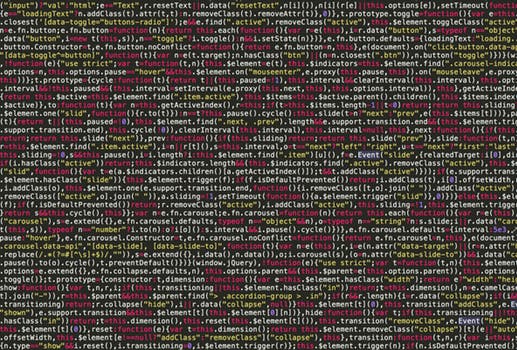TheDeveloperBlog.com
C-Sharp | Java | Python | Swift | GO | WPF | Ruby | Scala | F# | JavaScript | SQL | PHP | Angular | HTML
Java Sort Examples: Arrays.sort, Comparable
Sort elements in arrays and other collections. Use Arrays.sort and the Comparable interface.CompareTo: This returns an int that indicates whether the first object is larger, equal in size, or smaller than the second object.
Integer.compare: Returns negative one, zero, or one if the first argument is smaller, equal, or larger than the second.
Result: The Item objects are sorted in ascending order based on their "value" field.
Java program that implements Comparable
import java.util.Arrays;
class Item implements Comparable<Item> {
public int value;
public Item(int value) {
this.value = value;
}
public int compareTo(Item item) {
// Compare both value fields.
return Integer.compare(this.value, item.value);
}
public String toString() {
return "Value = " + value;
}
}
public class Program {
public static void main(String[] args) {
// Create array of four Item objects.
Item[] items = new Item[4];
items[0] = new Item(100);
items[1] = new Item(0);
items[2] = new Item(200);
items[3] = new Item(50);
// Sort the Items with their Comparable interface methods.
Arrays.sort(items);
// Display our results.
for (Item element : items) {
System.out.println(element);
}
}
}
Output
Value = 0
Value = 50
Value = 100
Value = 200
Code that compares in opposite order: Java
public int compareTo(Item item) {
// Compare both value fields.
return Integer.compare(item.value, this.value);
}
Output
Value = 200
Value = 100
Value = 50
Value = 0
Values: Negative one means "first is smaller." Positive one means "first is bigger." And zero means equal.
Java program that uses Integer.compare
public class Program {
public static void main(String[] args) {
System.out.println(Integer.compare(10, 1));
System.out.println(Integer.compare(1, 100));
System.out.println(Integer.compare(1, 1));
}
}
Output
1 [first is larger]
-1 [first is smaller]
0 [both are equal]
Note: Collections.sort is part of java.util.Collections. The collection (in this program, Vector) is modified in-place.
VectorJava program that uses Collections.sort
import java.util.Collections;
import java.util.Vector;
public class Program {
public static void main(String[] args) {
// Create Vector of three values.
Vector<Integer> values = new Vector<>();
values.add(10);
values.add(1);
values.add(100);
// Sort elements in vector.
Collections.sort(values);
// Display results.
for (int value : values) {
System.out.println(value);
}
}
}
Output
1
10
100
Then: We call Arrays.sort. Finally we use the String class constructor create a new String from our modified array.
Java program that alphabetizes String
import java.util.Arrays;
public class Program {
static String alphabetize(String value) {
// Convert String to array and sort its elements.
char[] values = value.toCharArray();
Arrays.sort(values);
return new String(values);
}
public static void main(String[] args) {
// Alphabetize this String.
System.out.println(alphabetize("zac"));
}
}
Output
acz
Sort by lengths: We sort the strings in an array by their lengths, from low to high. We implement a Comparator called LengthComparator.
Integer.compare: In compare(), we return the result of Integer.compare. We compare lengths.
Arrays.sort: We pass our String array and an instance of our LengthComparator to Arrays.sort. This orders the array.
Java program that implements Comparator
import java.util.Arrays;
import java.util.Comparator;
class LengthComparator implements Comparator<String> {
public int compare(String arg0, String arg1) {
// Use Integer.compare to compare the two Strings' lengths.
return Integer.compare(arg0.length(), arg1.length());
}
}
public class Program {
public static void main(String[] args) {
String[] array = new String[5];
array[0] = "this";
array[1] = "array";
array[2] = "has";
array[3] = "five";
array[4] = "elements";
// Sort strings by their lengths with this LengthComparator.
Arrays.sort(array, new LengthComparator());
// Display our results.
for (String value : array) {
System.out.println(value);
}
}
}
Output
has
this
five
array
elements
Caution: In my tests, parallelSort may not be faster than Arrays.sort. We must test parallelSort to see if it is faster in a program.
Java program that uses parallelSort
import java.util.Arrays;
public class Program {
public static void main(String[] args) {
// ... Create new array of 1000 random integers.
int[] numbers = new int[1000];
for (int i = 0; i < numbers.length; i++) {
numbers[i] = (int) (Math.random() * 1000);
}
// ... Use parallelSort on them.
Arrays.parallelSort(numbers);
// ... Display first and last number.
System.out.println(numbers[0]);
System.out.println(numbers[numbers.length - 1]);
}
}
Output
1
998
Version 1: This version of the code uses Arrays.parallelSort to sort the 1 million elements.
Version 2: This version uses the Arrays.sort method to sort the same elements on a single thread.
Result: For a large int array like the one here, we see a performance advantage (on a computer with 4-core Intel desktop processor).
Tip: The performance advantage of parallelSort is apparent on large arrays. The speedup is less than a factor of 2.
Java program that benchmarks parallelSort
import java.util.Arrays;
public class Program {
public static void main(String[] args) {
long t1 = System.currentTimeMillis();
// Version 1: use parallelSort on 1 million elements.
for (int i = 0; i < 100; i++) {
int[] values = new int[1000000];
for (int x = 0; x < values.length; x += 3) {
values[x] = x;
}
Arrays.parallelSort(values);
}
long t2 = System.currentTimeMillis();
// Version 2: use sort on 1 million elements.
for (int i = 0; i < 100; i++) {
int[] values = new int[1000000];
for (int x = 0; x < values.length; x += 3) {
values[x] = x;
}
Arrays.sort(values);
}
long t3 = System.currentTimeMillis();
// ... Times.
System.out.println(t2 - t1);
System.out.println(t3 - t2);
}
}
Output
473 ms Arrays.parallelSort
735 ms Arrays.sort
Related Links:
- Java Continue Keyword
- Java Convert Char Array to String
- Java Combine Arrays
- Java Console Examples
- Java Web Services Tutorial
- Java Odd and Even Numbers: Modulo Division
- Java IO
- Java 9 Features
- Java 8 Features
- Java String
- Java Regex | Regular Expression
- Java Filename With Date Example (Format String)
- Java Applet Tutorial
- Java Files.Copy: Copy File
- Java filter Example: findFirst, IntStream
- Java Final and final static Constants
- Java Super: Parent Class
- Java Date and Time
- Java do while loop
- Java Break
- Java Continue
- Java Comments
- Java Splitter Examples: split, splitToList
- Java Math.sqrt Method: java.lang.Math.sqrt
- Java Reflection
- Java Convert String to int
- JDBC Tutorial | What is Java Database Connectivity(JDBC)
- Java main() method
- Java HashMap Examples
- Java HashSet Examples
- Java Arrays.binarySearch
- Java Integer.bitCount and toBinaryString
- Java Overload Method Example
- Java First Words in String
- Java Convert ArrayList to String
- Java Convert boolean to int (Ternary Method)
- Java regionMatches Example and Performance
- Java ArrayDeque Examples
- Java ArrayList add and addAll (Insert Elements)
- Java ArrayList Clear
- Java ArrayList int, Integer Example
- Java ArrayList Examples
- Java Boolean Examples
- Java break Statement
- Java Newline Examples: System.lineSeparator
- Java Stream: Arrays.stream and ArrayList stream
- Java charAt Examples (String For Loop)
- Java Programs | Java Programming Examples
- Java OOPs Concepts
- Java Naming Conventions
- Java Constructor
- Java Class Example
- Java indexOf Examples
- Java Collections.addAll: Add Array to ArrayList
- Java Compound Interest
- Java Int Array
- Java Interface Examples
- Java 2D Array Examples
- Java Remove HTML Tags
- Java Stack Examples: java.util.Stack
- Java Enum Examples
- Java EnumMap Examples
- Java StackOverflowError
- Java startsWith and endsWith Methods
- Java Initialize ArrayList
- Java Object Array Examples: For, Cast and getClass
- Java Objects, Objects.requireNonNull Example
- Java Optional Examples
- Java Static Initializer
- Java static Keyword
- Java Package: Import Keyword Example
- Java Do While Loop Examples
- Java Double Numbers: Double.BYTES and Double.SIZE
- Java Truncate Number: Cast Double to Int
- Java Padding: Pad Left and Right of Strings
- Java Anagram Example: HashMap and ArrayList
- Java Math.abs: Absolute Value
- Java Extends: Class Inheritance
- Java String Class
- Java String Switch Example: Switch Versus HashMap
- Java StringBuffer: append, Performance
- Java Array Examples
- Java Remove Duplicates From ArrayList
- Java if, else if, else Statements
- Java Math.ceil Method
- Java This Keyword
- Java PriorityQueue Example (add, peek and poll)
- Java Process.start EXE: ProcessBuilder Examples
- Java Palindrome Method
- Java parseInt: Convert String to Int
- Java toCharArray: Convert String to Array
- Java Caesar Cipher
- Java Array Length: Get Size of Array
- Java String Array Examples
- Java String compareTo, compareToIgnoreCase
- Java String Concat: Append and Combine Strings
- Java Cast and Convert Types
- Java Math.floor Method, floorDiv and floorMod
- Java Math Class: java.lang.Math
- Java While Loop Examples
- Java Reverse String
- Java Download Web Pages: URL and openStream
- Java Math.pow Method
- Java Math.round Method
- Java Right String Part
- Java MongoDB Example
- Java Substring Examples, subSequence
- Java Prime Number Method
- Java Sum Methods: IntStream and reduce
- Java switch Examples
- Java Convert HashMap to ArrayList
- Java Remove Duplicate Chars
- Java Constructor: Overloaded, Default, This Constructors
- Java String isEmpty Method (Null, Empty Strings)
- Java Regex Examples (Pattern.matches)
- Java ROT13 Method
- Java Random Number Examples
- Java Recursion Example: Count Change
- Java reflect: getDeclaredMethod, invoke
- Java Count Letter Frequencies
- Java ImmutableList Examples
- Java String equals, equalsIgnoreCase and contentEquals
- Java valueOf and copyValueOf String Examples
- Java Vector Examples
- Java Word Count Methods: Split and For Loop
- Java Tutorial | Learn Java Programming
- Java toLowerCase, toUpperCase Examples
- Java Ternary Operator
- Java Tree: HashMap and Strings Example
- Java TreeMap Examples
- Java while loop
- Java Convert String to Byte Array
- Java Join Strings: String.join Method
- Java Modulo Operator Examples
- Java Integer.MAX VALUE, MIN and SIZE
- Java Lambda Expressions
- Java lastIndexOf Examples
- Java Multiple Return Values
- Java String.format Examples: Numbers and Strings
- Java Joiner Examples: join
- Java Keywords
- Java Replace Strings: replaceFirst and replaceAll
- Java return Examples
- Java Multithreading Interview Questions (2021)
- Java Collections Interview Questions (2021)
- Java Shuffle Arrays (Fisher Yates)
- Top 30 Java Design Patterns Interview Questions (2021)
- Java ListMultimap Examples
- Java String Occurrence Method: While Loop Method
- Java StringBuilder capacity
- Java Math.max and Math.min
- Java Factory Design Pattern
- Java StringBuilder Examples
- Java Mail Tutorial
- Java Swing Tutorial
- Java AWT Tutorial
- Java Fibonacci Sequence Examples
- Java StringTokenizer Example
- Java Method Examples: Instance and Static
- Java String Between, Before, After
- Java BitSet Examples
- Java System.gc, Runtime.getRuntime and freeMemory
- Java Character Examples
- Java Char Lookup Table
- Java BufferedWriter Examples: Write Strings to Text File
- Java Abstract Class
- Java Hashtable
- Java Math class with Methods
- Java Whitespace Methods
- Java Data Types
- Java Trim String Examples (Trim Start, End)
- Java Exceptions: try, catch and finally
- Java vs C#
- Java Float Numbers
- Java Truncate String
- Java Variables
- Java For Loop Examples
- Java Uppercase First Letter
- Java Inner Class
- Java Networking
- Java Keywords
- Java If else
- Java Switch
- Loops in Java | Java For Loop
- Java File: BufferedReader and FileReader
- Java Random Lowercase Letter
- Java Calendar Examples: Date and DateFormat
- Java Case Keyword
- Java Char Array
- Java ASCII Table
- Java IntStream.Range Example (Get Range of Numbers)
- Java length Example: Get Character Count
- Java Line Count for File
- Java Sort Examples: Arrays.sort, Comparable
- Java LinkedHashMap Example
- Java Split Examples